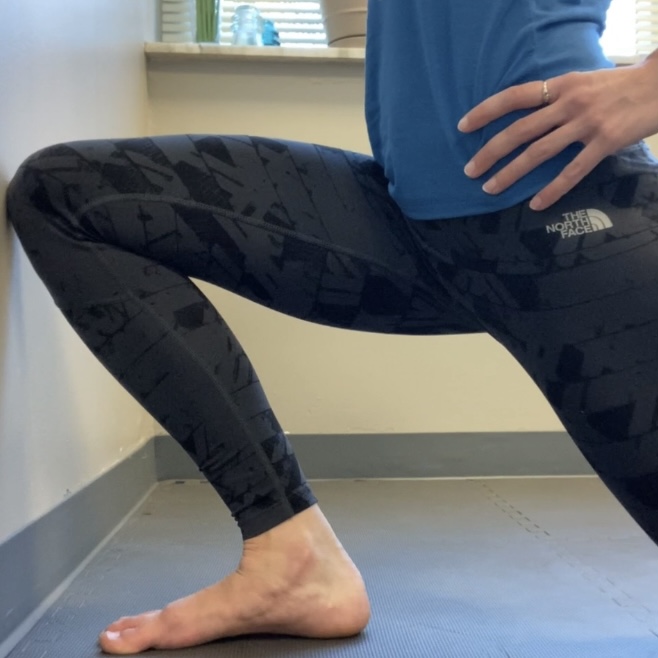This week we will move onto the next topic in the injury rehab progression: Movement Pattern. Once you have gained mobility, whether that be mobility of soft tissue or mobility of the joint, the way to maintain that mobility is by teaching your body to use it through a daily or functional movement pattern. This will make the mobility “stick.”
For example, if we want to maintain ankle mobility, but we don’t use that mobility when we go to squat or lunge, we will lose it again quickly. The old saying, “If you don’t use it, you lose it” truly does apply here. We need our body to learn that it is safe and comfortable to use our newly gained mobility so that it starts to become more automatic. This, in turn, will allow us to move further through the rehab progression and to return back to normal and higher level activity.
Below you can see an example of a squat with limited ankle mobility/dorsiflexion range of motion. We then show how to self mobilize the ankle joint. Finally, we demonstrate a squat (with proper form) utilizing the ankle mobility we just gained to work on the movement pattern. This progression can take 5 minutes, 30 minutes or 4 weeks depending on how much mobility needs to be gained and whether or not we then use that mobility in a functional way to help with carry-over. If we do not use the newly gained motion, we will need to continually regain the movement, which can lead to a much longer rehab cycle.
Although proper performance of a movement pattern requires appropriate mobility, sometimes mobility is not the issue at all. Movement patterns can be deficient because of issues with stability or strength. We cannot move into a position that our brains do not perceive as safe. If the movement pattern is not strong and stable, your brain will stop you from moving into certain ranges or movements. This can cause muscles or joints to tighten up again to protect the area…and around and around we go.
We can now see how certain injuries can spiral into a vicious cycle until we identify and address the underlying issue. If you are struggling with a chronic injury and have tried rest and other self-care, but continue to have pain as you return to running or any other desired level of activity, you may need a professional to assess the true cause.
An example of a movement pattern limited by strength/stability would be someone that cannot touch their toes. We often think that this is due to limited hamstring flexibility. While hamstring restriction can limit this movement pattern, sometimes it can also be due to limitations in lumbar spine mobility or even due to lack of strength and stability of the hip/back/core musculature. This lack of stability makes the body perceive this range of motion as “unsafe” and prevents us from moving through full range of motion and without pain. In this case, we need to find a way to engage our core and lumbar musculature to help our brain perceive the motion as safe/stable and therefore, attainable.
One way we can do this, as seen in the video below, is to place a ball between our thighs and squeeze the ball as you bend forward to touch your toes. This engages the core and hip musculature, which should help our body feel more stable and safe as we bend forwards.
(Unlike the video above, where the limited ankle mobility was faked, this video shows a true gain of toe touch motion. So you can see, sometimes motion can be restored very quickly!)
Move on to the next step in the Injury Rehab Progression: Load It!

